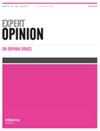Fusariosis: an update on therapeutic options for management
IF 0.8
4区 医学
Q4 PHARMACOLOGY & PHARMACY
引用次数: 3
Abstract
ABSTRACT Introduction Disseminated fusariosis is a serious fungal infection with a high mortality rate among immunocompromised hosts. Management of fusariosis is challenging due to intrinsic resistance to most available antifungal agents. The novel antifungals that are in the pipeline may help to enhance favorable outcome of fusariosis. Clinical trials and animal model studies are required to achieve optimal management of fusariosis. Areas covered This review highlights the available and novel antifungal agents for management of human fusariosis. It also highlights the importance of surgical debridement and reversal of immunosuppression in patients with invasive fusariosis We examine the following databases: Medline, PubMed, and Google Scholar for the following key terms ‘fusariosis', ‘disseminated fusariosis,’ ‘invasive fusariosis,’ and ‘Fusarium.’ Expert opinion Currently, voriconazole or liposomal amphotericin B is the recommended approach for treating invasive fusariosis. Posaconazole is used for salvage therapy. Combination therapy may be used in refractory or severe cases as empiric therapy awaiting results of susceptibility testing. Granulocyte colony stimulating factor is usually used in patients with profound and prolonged neutropenia. Immunosuppressive agents should be reduced when possible. Primary triazole prophylaxis may be considered for high-risk patients, while secondary prophylaxis is recommended in patients with a history of invasive fusariosis requiring immunosuppression.镰孢病:管理治疗选择的最新情况
播散性镰孢菌病是一种严重的真菌感染,在免疫功能低下的宿主中具有很高的死亡率。由于对大多数现有抗真菌药物的内在耐药性,镰孢病的管理具有挑战性。正在研发中的新型抗真菌药物可能有助于提高镰孢病的治疗效果。需要进行临床试验和动物模型研究,以实现对镰孢病的最佳管理。本综述重点介绍了用于治疗人类镰孢病的现有和新型抗真菌药物。我们检查了以下数据库:Medline、PubMed和谷歌Scholar,以获取以下关键词“镰刀病”、“播散性镰刀病”、“侵袭性镰刀病”和“镰刀菌病”。专家意见目前,伏立康唑或两性霉素B脂质体是治疗侵袭性镰孢病的推荐方法。泊沙康唑用于抢救治疗。对于难治性或重症病例,联合治疗可作为等待药敏试验结果的经验性治疗。粒细胞集落刺激因子通常用于重度和长期中性粒细胞减少症患者。尽可能减少免疫抑制剂的使用。高危患者可考虑一级三唑预防,而有侵袭性镰孢病病史需要免疫抑制的患者建议二级预防。
本文章由计算机程序翻译,如有差异,请以英文原文为准。
求助全文
约1分钟内获得全文
求助全文
来源期刊

Expert Opinion on Orphan Drugs
PHARMACOLOGY & PHARMACY-
CiteScore
2.30
自引率
0.00%
发文量
8
期刊介绍:
Expert Opinion on Orphan Drugs is an international, peer-reviewed journal that covers all aspects of R&D on rare diseases and orphan drugs.
 求助内容:
求助内容: 应助结果提醒方式:
应助结果提醒方式:


